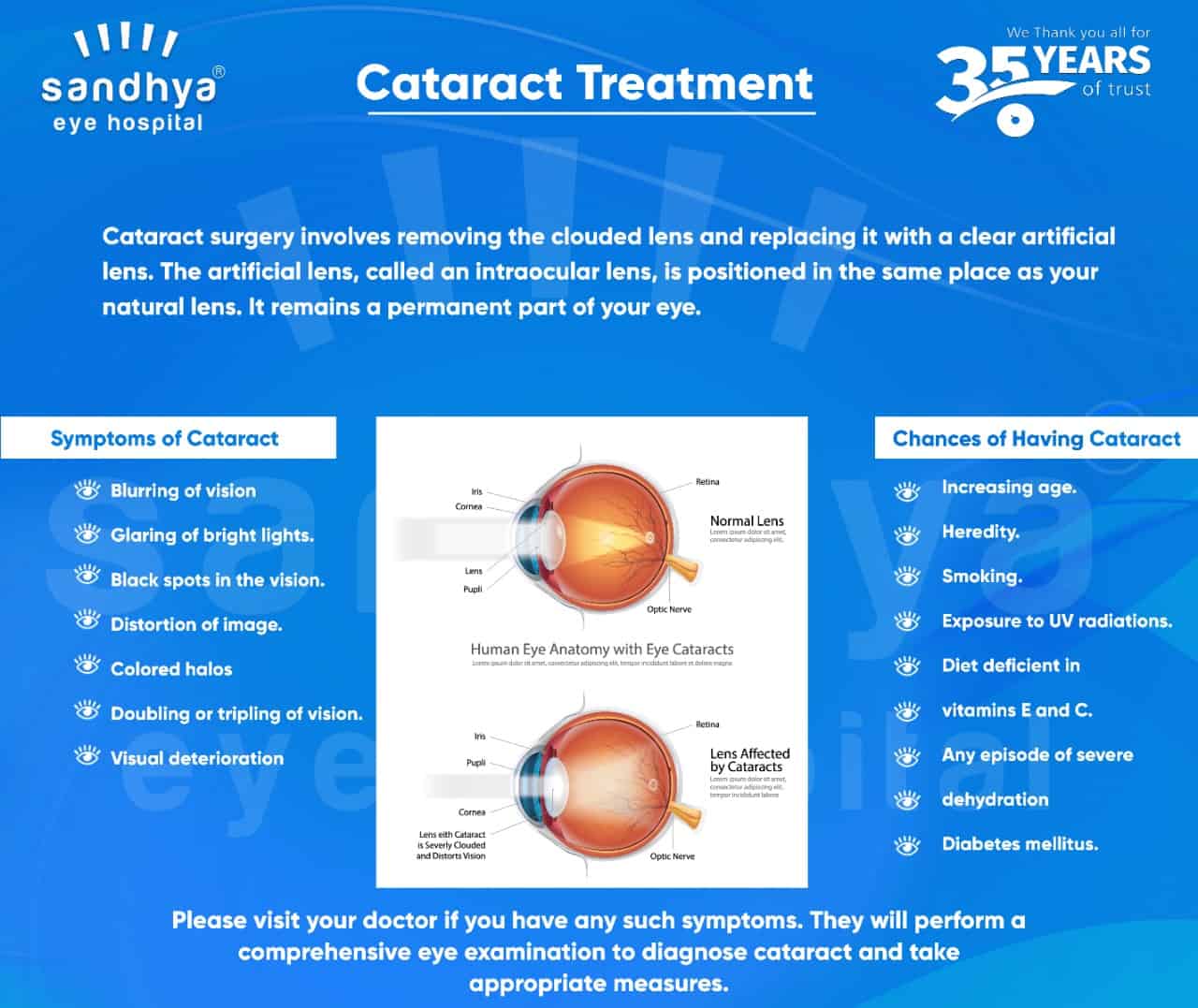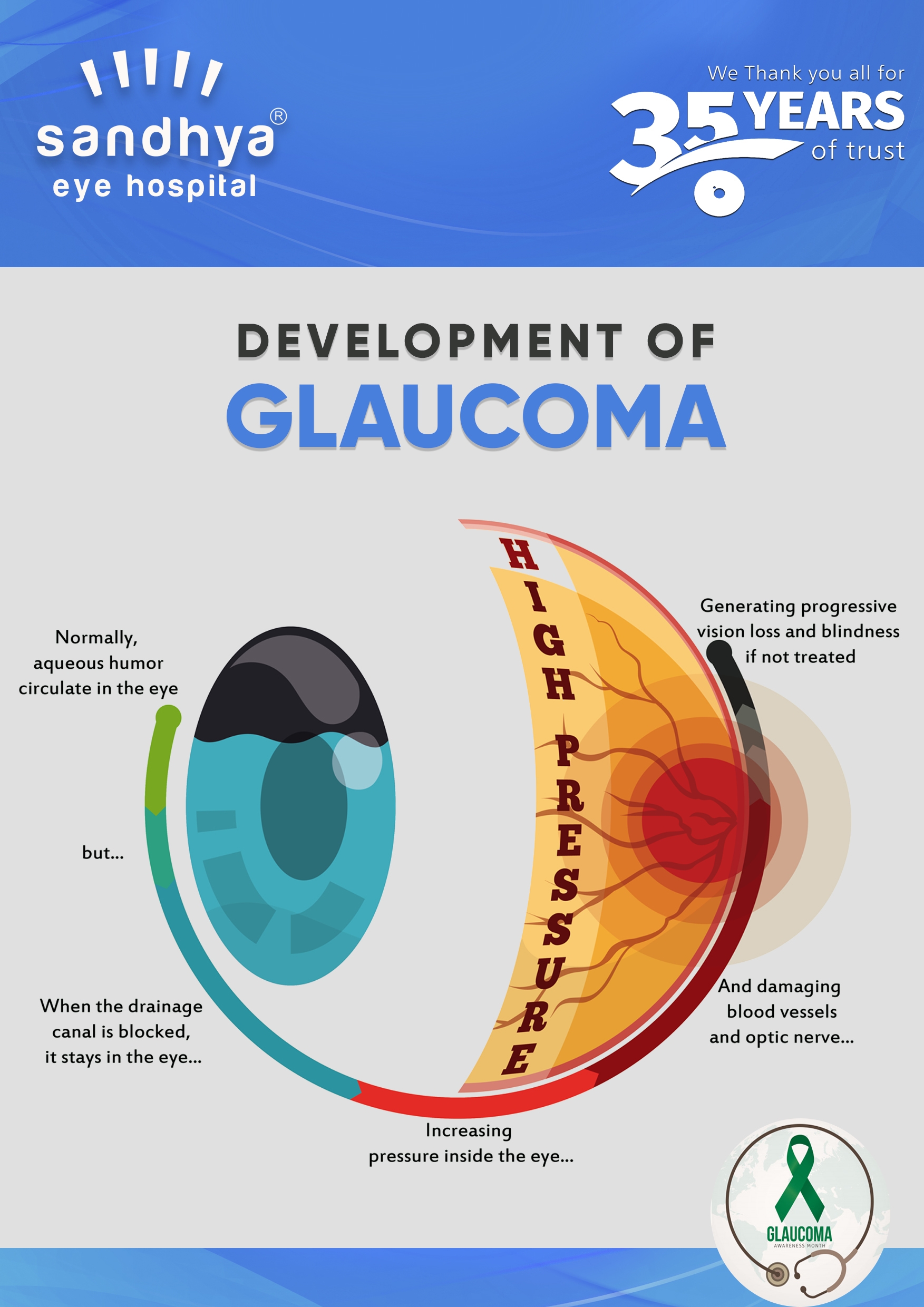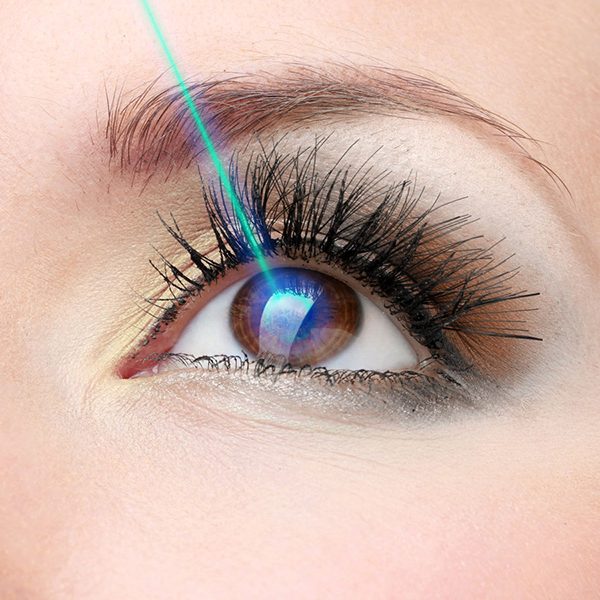Cataract Services
Our eyes contain a transparent structure just behind our pupils called the lens. The lens mainly functions as the major refracting structure (concentrating the light rays onto your retina) of the eye. Clouding of this lens causes blurring of vision, which is called cataract. It is a very common occurrence and more than 90% people over the age of 70 years have cataract in one or both eyes. Rarely it can also occur in childhood. When an infant is born with it, it is called congenital cataract. Cataract is the leading cause of blindness in the developed world.

Risk factors for increased chances of having a cataract
- Increasing age.
- Heredity
- Smoking
- Exposure to UV radiations.
- Diet deficient in vitamins E and C.
- Any episode of severe dehydration which required hospitalization.
- Diabetes mellitus.
Symptoms of an eye affected by cataract
- Blurring of vision.
- Glaring of headlights or bright lights.
- Black spots in the vision.
- Distortion of image.
- Colored halos.
- Doubling or tripling of vision.
- Visual deterioration.
Please visit your doctor if you have any such symptoms. They will perform a comprehensive eye examination to diagnose cataract and take appropriate measures. Tests to check your visual sharpness, visual field and a slit lamp examination to visualize the lens will be done.
Treatment
Treatment for cataract is mainly surgical. Though vitamin supplementation has been tried in clinical trials, surgery remains the definitive procedure and results in immediate return of visual function. Surgery is warranted mainly due to complains of visual disturbance. Other reason your doctor might suggest cataract surgery is that the cataract might be interfering with treatment and monitoring of diseases at the back of the eye like ARMD or diabetic retinopathy.
Surgery
Your doctor will perform an ultrasound scan of the eye to measure the dimensions of the eye. This helps the surgeon decide on which Intraocular Lens (IOL) is required to be placed inside the eye. IOLs are synthetic lenses made up of plastic, silicone or acrylic. These IOLs are flexible and require a very small incision in the eye to fold them up and be inserted where the natural lens would have been. These incisions would require few or no stitches to fix the wound.
Cataract surgery is a very simple procedure which can be done on an outpatient basis. The procedure usually lasts less than an hour. The surgeon will apply drops to dilate the eyes and also give you a numbing agent to anesthetize the area. You might feel groggy if a sedative is given to you instead. Using a small probe the surgeon will break up the existing lens with the help of ultrasound waves. The lens is fragmented and removed through the incision. The IOL is placed inside and the tiny incision is stitched back up.
Post-surgery
Post-surgery you will be given a patch to cover the eye for a few days. Immediate improvement of vision once the patch is removed occurs most of the time. Regular follow-up is required to make sure that the lens is in place. A little bit of discomfort is expected but in case you experience redness, pain in the eye, swelling in the eye, flashes or vision-loss, then immediate consultation should be sought. However most cataract surgeries have no complications and are done quickly without any hindrance.




